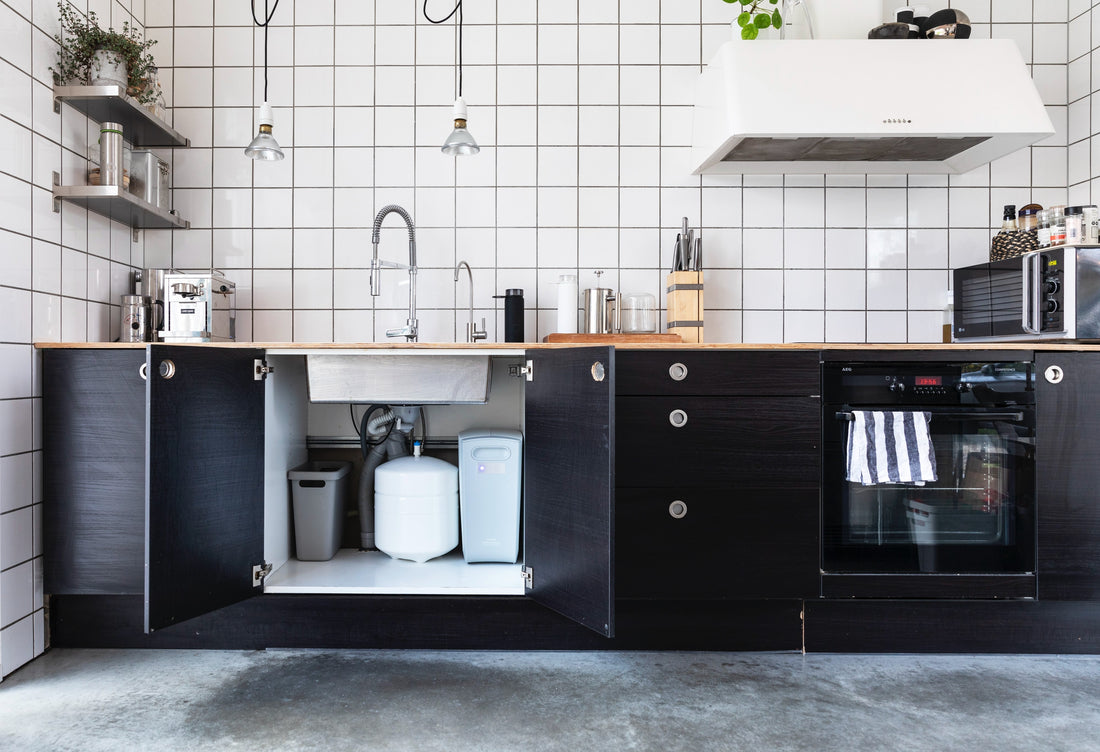Is Reverse Osmosis a Water Softener?
Recognizing that your home’s hard water should be filtered and softened to have high-quality water is the easy part. The hard part begins when looking at the seemingly thousands of water filtration and softener systems online. How do you know which systems your home needs for optimal water? Your home likely needs a reverse osmosis system and a water softener. Let’s get into the distinctions between these two systems, the pros, the cons, and everything in-between:
Why Get a Water Softener?
According to Homewater 101, a staggering 85% of American households have hard water in their homes. Hard water makes mineral deposits on our clothes after doing laundry, makes spotty dishes, dries our skin, and generally smells unpleasant. Why does hard water causes all of these issues? Water is considered “hard” because it contains high mineral content — mainly calcium and magnesium. Water needs to reach a pH level of eight or higher for it to be considered hard. The high pH level and mineral content in hard water can negatively impact your home’s pipes by building scale.
Water softeners are systems specifically created to remove the calcium and magnesium ions that make water hard. Home water softeners are commonly referred to as ion exchange units — these systems replace the calcium and magnesium ions with sodium or potassium ions.
While you could buy an ion exchange unit that utilizes sodium, opting for a salt-free water softener is best. Salt-free water softeners ensure your pipes won’t come into contact with any unnecessary sodium that could cause further damage. The typical water softener costs anywhere between $500 to $6,000. You should expect to pay somewhere around $1,000 for the average high-quality water softener.
Why Get a Reverse Osmosis System?
Water softeners will make your home’s water more purposeful when doing dishes and laundry. If you install a water softener in your home, you will almost immediately notice a big difference in your hair and skin.
While water softeners are fantastic for making a home’s water more enjoyable for various purposes, these systems do not filter a home’s water. Water softeners remove calcium and magnesium from the water — they do not filter out any other harmful contaminants or pollutants.
Reverse osmosis systems (RO) typically filter the water through two to four stages. This water purification process involves the water passing through semi-permeable membranes to make it safe for drinking.
We understand that water filtration jargon might not necessarily be your thing, so here’s the important part: these systems remove harmful pollutants like sodium, chloride, copper, chromium, and lead.
RO systems placed directly underneath sinks will cost anywhere between $200 and $800. If you’re looking for a whole house RO system, you should expect to spend anywhere between $750 to $7,500.
Why Get Both a Reverse Osmosis System and Water Softener?
Truthfully, there are no cons when converting your home’s unpleasant hard water for softer water. The only potential "con" for both RO systems and water softeners is that they can't do the job of the other system. Water softeners are fantastic for making water higher quality, but these systems will not make the water safe to drink. While an RO system can soften water, it isn’t as effective because its primary purpose is to filter the water. It’s beneficial to pair these two systems together because water softeners will protect the membranes in RO systems — saving you money in the long run.
If you install both a RO system and water softener, your home will have clean water that is safe to enjoy for many years to come.






